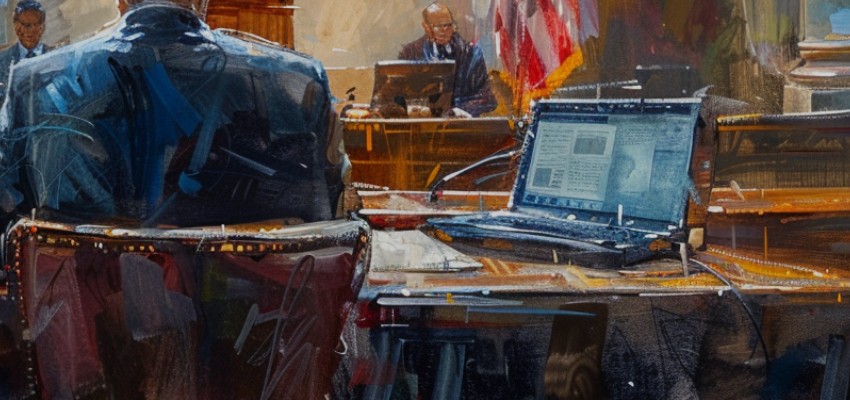In the autumn of 2023, a storm brewed between two tech titans. Nokia, the Finnish telecommunications stalwart, filed lawsuits across four continents, alleging that Amazon’s streaming services—Prime Video and Twitch—had woven its patented video technologies into their platforms without permission. The claims centered on innovations Nokia had cultivated over decades: video compression algorithms that shrink file sizes without sacrificing quality, adaptive bitrate systems that adjust streaming resolution on the fly, and hardware optimizations ensuring seamless playback on devices like Fire TV. Beyond the financial risk and market disruption, the lawsuits raised key questions for legal and compliance teams—particularly eDiscovery professionals—about how structured digital evidence, cloud systems, and cross-border enforcement are shaping modern IP litigation.
The legal battle quickly escalated. By July 2024, Amazon retaliated with a countersuit in Delaware, accusing Nokia of infringing its cloud computing patents. At stake were technologies foundational to modern data centers: network virtualization tools from Nokia’s Nuage Networks and security protocols embedded in its CloudBand software. This marked a rare moment of aggression from Amazon, which had largely avoided patent litigation despite amassing over 15,000 patents related to its cloud operations. The move underscored a broader industry shift, where cloud providers and telecom innovators increasingly clash over overlapping territories in digital infrastructure.
Germany soon became the epicenter of the dispute. In Munich, a regional court sided with Nokia in September 2024, ruling that Fire TV devices infringed a key video compression patent. The resulting injunction forced Amazon to halt sales of the streaming sticks in Europe’s largest economy by October. But the victory was partial. Months later, a Düsseldorf court delivered a split verdict: while upholding Nokia’s adaptive streaming patent against Prime Video, it dismissed claims over a content recommendation system. The decision revealed selective vulnerabilities in Nokia’s IP portfolio and signaled how finely balanced these cases can be.
Across the Atlantic, the U.S. International Trade Commission (ITC) amplified the pressure. Judges twice endorsed Nokia’s claims, recommending an import ban on certain Amazon devices—a rare and serious rebuke for the e-commerce giant. The ITC’s support marked one of the most consequential legal challenges Amazon had faced on the IP front, and it sparked concern across the tech industry about the power of standard-essential patent enforcement.
Behind the scenes, financial realities loomed large. Nokia invested €4.5 billion in R&D in 2024 alone—part of a staggering €150 billion investment since 2000 that has birthed more than 20,000 patents. Licensing these innovations is not merely profitable—it is existential. In 2023, Nokia’s licensing business generated nearly €1.5 billion in revenue, underpinning its strategy of monetizing next-generation communications technology while limiting exposure to cyclical hardware markets.
For Amazon, the calculus shifted as legal costs mounted and German sales flatlined. By March 2025, pragmatism prevailed. The companies announced a confidential, multi-year licensing deal, silencing all active cases—from Delhi to the Unified Patent Court in Luxembourg.
Arvin Patel, Nokia’s Chief Licensing Officer, struck a conciliatory tone: “We are pleased to have reached agreement on the use of Nokia’s video technologies in Amazon’s streaming services and devices.” The statement masked the deeper friction. While the deal spared Amazon from further injunctions, it also validated Nokia’s strategy of extracting value from its intellectual property—a model it has honed through similar settlements with HP, Lenovo, and other tech firms.
Still, key questions remain. How will royalties be structured for hybrid patents that blend standardized and proprietary technologies, especially as these models become more common in cloud-streaming convergence? What precedent does this set for hyperscale cloud providers seeking to avoid licensing fees for telecom-developed innovations?
Indeed, as 6G networks loom and streaming services push into 8K resolution, such legal clashes may become endemic. Telecom providers, with decades of research in network optimization and media delivery, now find themselves guarding key infrastructure patents that cloud and platform companies increasingly depend on.
For eDiscovery professionals, this dispute is more than a headline—it’s a case study in how IP enforcement intersects with cross-border data handling, cloud infrastructure compliance, and evolving discovery obligations. With litigation spanning multiple jurisdictions and touching both software and hardware systems, the case underscores the rising importance of understanding how digital evidence, patent claims, and cloud service architectures intertwine. As IP-related disputes increasingly involve structured data, system logs, and source code repositories, the role of eDiscovery in preparing defenses or asserting claims in such tech-centric cases is more vital than ever.
For now, the truce allows both giants to refocus—Nokia on monetizing its next-gen innovations, Amazon on securing its foothold in the $300 billion streaming arena. But in the silent corridors of their legal teams, the next battle is already being mapped.
News Sources
- Bittersweet outcome for both Nokia and Amazon Prime in Düsseldorf (JUVE Patent)
- Amazon sues Nokia over cloud computing patents (Reuters)
- Amazon says German customers won’t lose Amazon Prime as a result of court ruling (Yahoo! Finance)
- Nokia and Amazon sign agreement settling global patent dispute (JUVE Patent)
- Nokia Signs Patent Agreement With Amazon (Morningstar)
- Nokia and Amazon sign patent agreement (Nokia.com)
Assisted by GAI and LLM Technologies
Source: HaystackID published with permission from ComplexDiscovery OÜ




